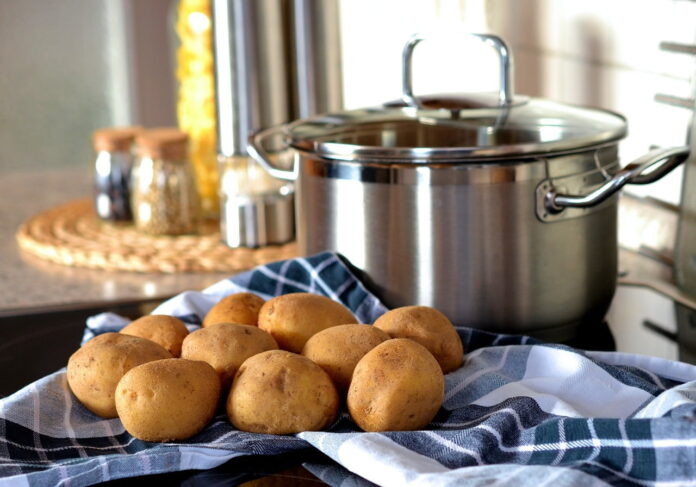The adage “Waste not, want not” is a call to action in the face of a global food waste crisis that has far-reaching implications for the environment, economy, and society. Every year, approximately one-third of all food produced for human consumption is lost or wasted, amounting to about 1.3 billion tons.
This staggering figure highlights a systemic issue that contributes to greenhouse gas emissions, squanders resources such as water and energy, and occurs while hunger persists worldwide. The environmental impact is profound; food waste decomposing in landfills produces methane, a potent greenhouse gas that exacerbates climate change. Economically, the cost of food waste is estimated at $940 billion annually, a loss felt from the individual household budget to national economies. Socially, the ethical dilemma is clear: while edible food is thrown away, nearly 690 million people go hungry. Addressing food waste is not just an environmental imperative but a moral one.
Step 1: Smart Shopping – Plan Your Meals and Purchase with Purpose
The journey to a food-waste-free kitchen begins with smart shopping. Planning your meals for the week ahead can significantly reduce impulse buys and ensure that you purchase only what you need. Start by taking inventory of what you already have in your pantry and refrigerator to avoid duplicating items. Make a detailed shopping list based on your meal plan, and stick to it when you’re at the store. Consider the shelf life of perishable items and whether you’ll be able to consume them before they spoil. Buying in bulk can be cost-effective, but only if you’re able to use the food before it goes bad. Additionally, understanding food labels such as “best before” and “use by” can help you make informed decisions and avoid unnecessary waste.
Step 2: Storage Solutions – Keeping Your Food Fresh Longer
Proper storage can dramatically extend the life of your food, helping to keep it fresh and safe to eat for longer periods. Different foods require different storage methods to maintain their quality. For instance, some fruits and vegetables emit ethylene gas, which can accelerate ripening and spoilage in other produce. Knowing which items to keep separate can prevent premature spoilage. Refrigeration is crucial for many perishables, but the temperature and humidity settings must be optimized for the types of food you’re storing. Additionally, using airtight containers, vacuum sealing, and proper packaging can protect against air and moisture, two factors that contribute to food degradation. Freezing is another effective way to preserve food, especially for items like bread, meat, and cooked meals that you might not consume immediately.
Step 3: Creative Cooking – Turning Leftovers into New Meals
Leftovers are often overlooked as a resource for creating new meals. With a bit of creativity, last night’s dinner can be transformed into today’s lunch with minimal effort. For example, roasted vegetables can become a filling for omelets or a topping for salads. Bones and vegetable scraps can be simmered into a flavorful stock that serves as the base for soups and stews. Stale bread finds new life as croutons, breadcrumbs, or even in sweet dishes like bread pudding. Embracing a flexible approach to recipes allows you to substitute ingredients and use what you have on hand, reducing the need to buy additional items that might go to waste. Sharing recipes and ideas within a community can inspire others to see the potential in their leftovers, fostering a culture of resourcefulness and innovation in the kitchen.
Step 4: Composting – Transforming Waste into Garden Gold
Even with the best intentions and practices, some food waste is inevitable. Composting offers a solution to turn scraps and spoiled food into a valuable resource for your garden. Composting is the natural process of recycling organic matter, such as leaves, vegetable peels, and coffee grounds, into a rich soil amendment. By composting, you can reduce the volume of waste sent to landfills and provide your plants with nutrient-dense compost that improves soil structure, moisture retention, and plant health. Setting up a compost bin is simple and can be done in various scales to suit your living situation, from a small countertop bin for apartment dwellers to a larger setup in a backyard. Composting not only benefits your garden but also contributes to a circular economy where nothing is wasted.
Embracing a Sustainable Lifestyle for a Healthier Planet
Adopting a food-waste-free kitchen is a significant step toward a more sustainable lifestyle. Each action, from smart shopping to composting, contributes to a larger movement that values resources and seeks to minimize our environmental footprint. By making conscious choices and embracing innovative solutions, we can collectively address the food waste crisis and move towards a healthier planet. The benefits are clear: reducing food waste can save money, conserve resources, and lessen the burden on landfills. It’s a win-win for both the individual and the environment. As we become more mindful of our consumption patterns and their impact, we can inspire others to join in the effort, creating a ripple effect that has the power to transform our world. Waste not, want not is more than a saying—it’s a philosophy for a sustainable future.
